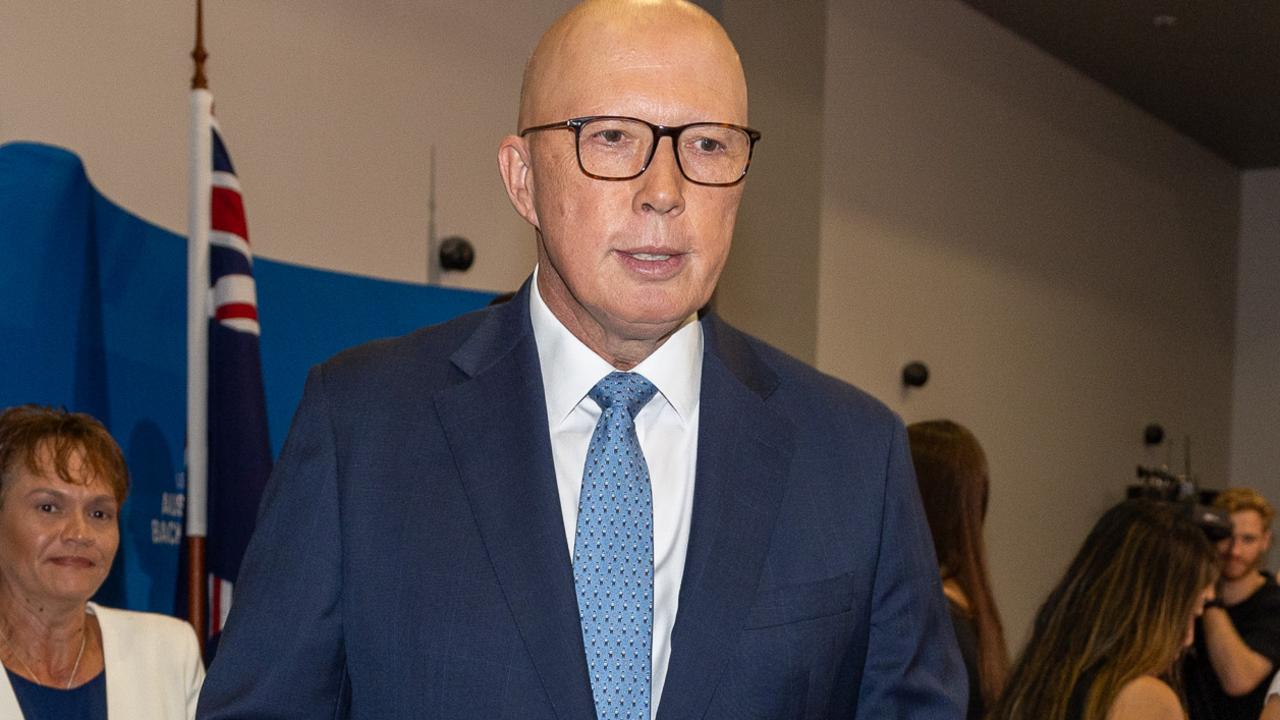Cyclone Tracy 50 years: Ian ‘Nammo’ Badman’s story retold by Connair pilot David Fredricksen
How do you save a plane from a cyclone in the Territory? Hint – it involves multiple cartons of beer, and holding on for dear life for the night. Read his story as retold by fellow a pilot.
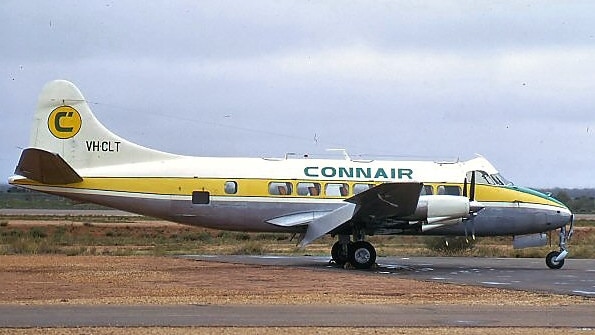
Northern Territory
Don't miss out on the headlines from Northern Territory. Followed categories will be added to My News.
It’s a question the average Australian may never give serious consideration to: How do you save a plane during a cyclone?
But during the worst cyclone to ever hit the Northern Territory, one man not only considered it, but his actions helped reconnect Darwin to the rest of Australia.
In the wake of the devastation of Cyclone Tracy, radio communication to the rest of Australia was all but gone – except for the radio on one plane in the airport.
This was thanks to Ian “Nammo” Badman.
In 1974, Nammo was working with Connellan Airways in Darwin.
When news broke a cyclone was coming close to the city, pilots were ordered to get the Connellan Airways’ fleet out of Darwin down to Katherine.
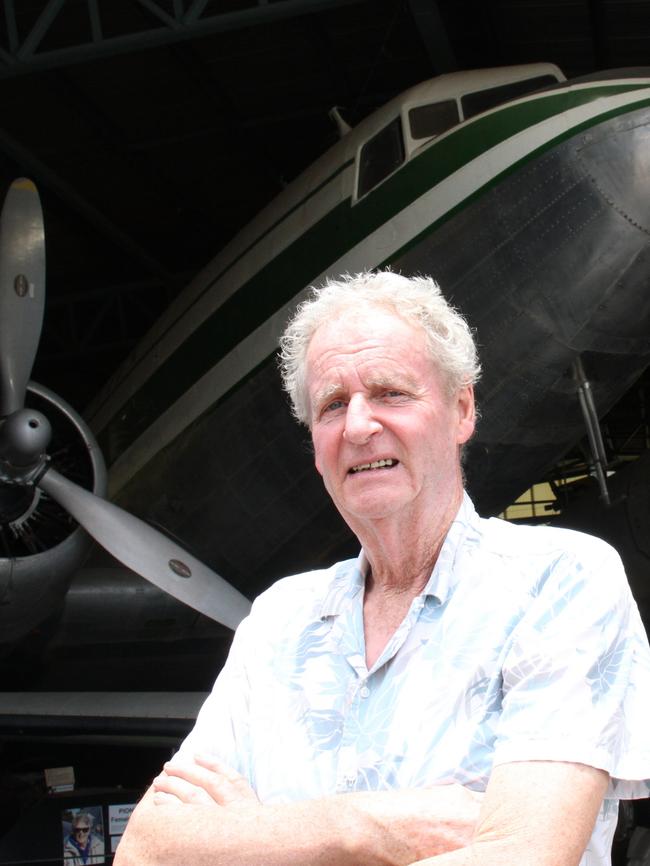
Except for one aircraft, which was left under Nammo’s guard.
A Heron VH-CLT was kept tucked away in a hangar at the airport, and spending the night with it was Nammo, his dingo and enough cartons of beer to fill a the plane’s rear freight locker.
As Tracy roared on, Nammo stayed with the Heron throughout the night – the plane weighed down by beer, facing into the wind, while the two did their best to withstand Tracy’s destructive force.
Both survived.
“ (Nammo) stayed the night with it and he hooked a tug on the back of it and it was in a new, very strong hangar and it was probably one of the only hangars that wasn’t damaged,” retired Connellan pilot David Fredricksen says.
And while the rest of the planes at Darwin Airport on Christmas Day “were like paper darts smashed together”, Fredricksen says the Heron survived.
Using the HF radio on the Heron inside the hangar, Fredricksen made contact with Katherine – who chimed in and said “The whole world wants to know what’s happened”.
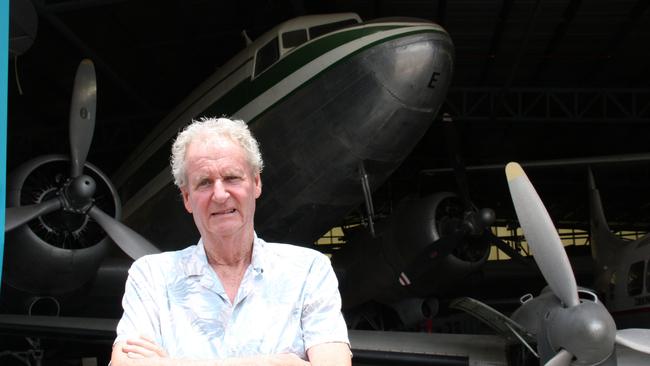
“Darwin’s been 90 per cent destroyed,” was Fredricksen’s reply.
Fellow retired Connellan pilot John Myers was with Fredricksen when he made first contact post-Tracy, and remembers seeing Nammo in the morning.
“He (Nammo) kept it safe all night by towing it into the wind, he finished a carton of beer and a bottle of rum to do so – which probably gave him strength,” he says.
But Nammo ’s story doesn’t end there – nor does that of the plane.
In 2001, aviation historian Ron Cuskelly had a chat with Nammo to clear up exactly how he saved the Heron.
Nammo explained how the controls of the plane were locked, the wheels were chocked, the brakes were set and the tail was anchored.
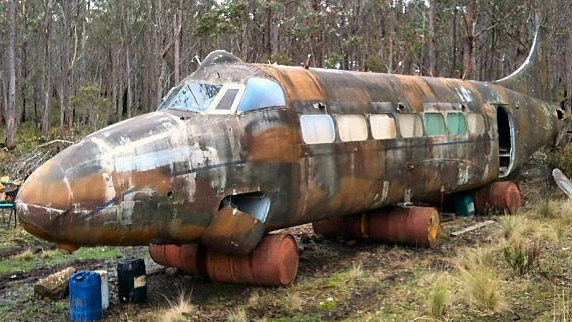
However, it was never established just how much of the beer Nammo drank – or if he indeed downed a bottle rum – during his mission.
Nammo died in 2015.
However, with the help of Cuskelly, we do know what happened to the Heron – later nicknamed Nammo – after years
in service: It made its way to Tasmania
in 1986.
After retirement, the Heron’s fuselage was used as a hunting lodge in Woodbury, before it was later relegated to use as a storage shed, Cuskelly says.
While many hunters may not know the significance of the plane they hunted from, the world now knows the story of the man who saved the plane which reconnected Darwin with the rest of the world after Cyclone Tracy.
Vale Ian “Nammo” Badman.
More Coverage
Originally published as Cyclone Tracy 50 years: Ian ‘Nammo’ Badman’s story retold by Connair pilot David Fredricksen




